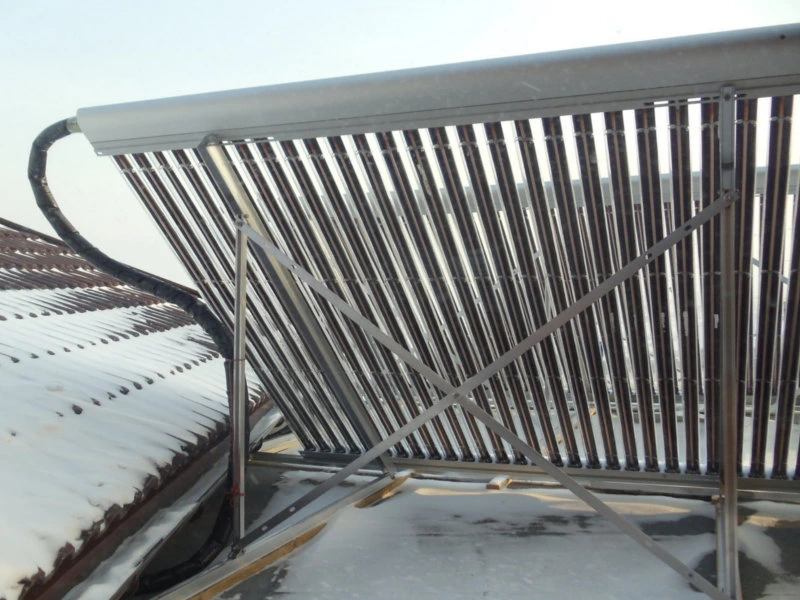-
-
Service & Garantien
Service & Garantien

The heat transfer fluid is an essential component of every thermal solar system. It transports the heat collected by the solar collectors to the energy storage. There, the fluid heats the water in the storage through a solar heat exchanger. The fluid then cools down and is pumped back to the collectors. The heated water in the storage is used for drinking water preparation or heating when needed.
To ensure the operational safety of a solar thermal system over the long term, especially during the cold winter months, the system owner should check the antifreeze level annually before the winter season.
This is particularly important when temperatures drop very low, as the correct mixture ratio and consistency of the water-glycol mixture are crucial for the system’s functionality. Similar to a car’s cooling system, the antifreeze prevents the water from freezing at low temperatures, thus preventing the system from breaking down.
The antifreeze for solar systems is a non-toxic, biodegradable glycol mixture. The mixture is also supplemented with special additives that protect the system’s metal parts from corrosion. Additionally, it is important to always use the same antifreeze mixture for consistency.
But beware, antifreeze for cars is not suitable for solar systems.
Under normal circumstances, the heat transfer fluid can be used for between five and ten years. However, it’s better to be cautious than to regret later. Frost can cause significant damage to both the collector and other components of the solar system, which in most cases is not covered by insurance. To get an initial impression of the condition of the solar fluid, a visual inspection can be helpful.
For this, a sample is taken and checked for clumping and discoloration. If the fluid is brown or black, it no longer provides sufficient frost protection. A strong ammonia smell is also a sign of degraded antifreeze. Another reason for insufficient frost protection could be an insufficient amount of heat transfer fluid in the system. This can result from leaks in the system or from steam hammer, which causes a noticeable drop in the system pressure.
In any case, it’s important to have the system checked once a year. The proper inspection should be carried out by a professional installer. They will use a frost protection tester, also known as a refractometer, to measure the antifreeze content, density, and dirt particles in the heat transfer fluid. The pH level will also be checked. If the values are not correct and a fluid change is necessary, the system must be professionally refilled and flushed by the installer using a flushing and filling pump. This pump uses a high volume flow to flush and fill the system, preventing air bubbles that could cause system malfunctions.
AKOTEC Solar Thermal